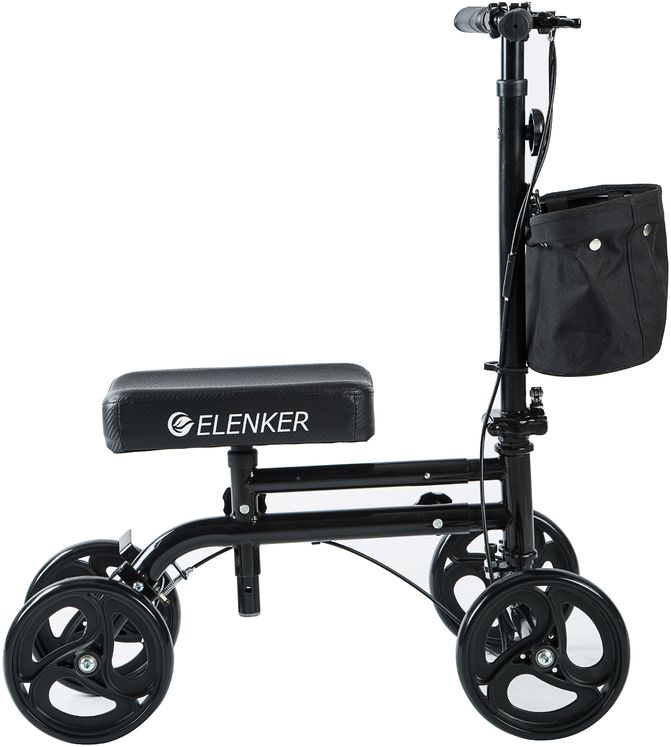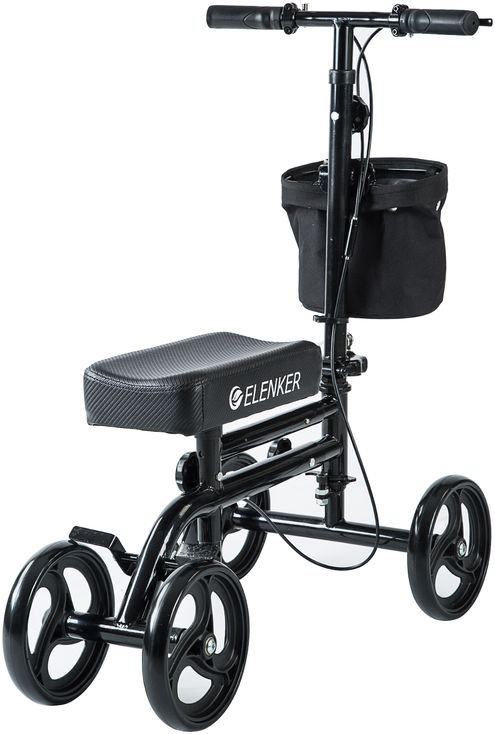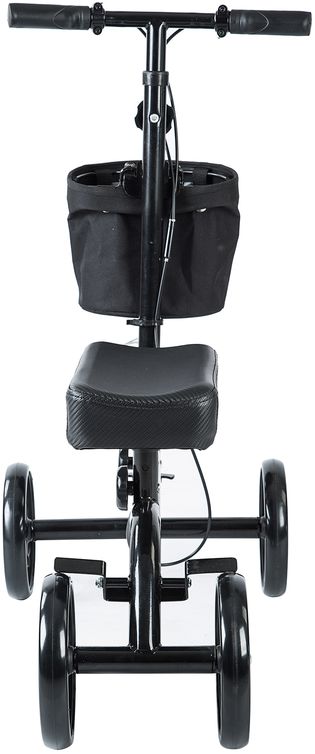

When it comes to the matter of mobility aids, there are several options on the market. Each option accommodates advantages and disadvantages. However, two of the most popular medical mobility devices are knee scooters and rolling walkers. These devices can facilitate individuals with mobility impairments to move around independently with reduced pain, resulting in improved quality of life.

Knee Scooter
A knee scooter, also known as a knee walker, is a medical mobility device that provides support to a person's injured or weak leg, allowing them to move around while keeping their non-injured leg entirely grounded. It remains equipped with four-wheels, handlebars, a knee-pad, and a steering column. These knee scooters are an ideal choice for individuals recovering from foot, ankle, or lower leg injury, as individuals can avoid putting weight on their injured limb, which helps promote healing and reduces pain.
Knee scooters offer a suitable alternative to crutches, providing more stability and reducing the risk of falls. While crutches may cause pain in the underarms, back, and wrists, knee scooters are designed to alleviate such discomfort by enabling users to stand more uprightly and ensuring that their weight is evenly distributed which is favorable for recuperation and comfort. Additionally, knee scooters present ease in maneuverability with their four-wheeled design that helps distribute weight and reduce the risk of tipping over, particularly for navigating within tighter and constricted indoor spaces.
Nevertheless, knee scooters are not universally suitable. They are best suited for those with an injury or surgery under the knee and cannot be used for injuries above the knee. Steering requires the use of both hands, which makes it difficult or impossible for individuals with upper limb impairments to utilize scooter operations. As well, knee scooters may not be suitable for persons with balance disorders or severe arthritis.
Rolling Walker
A rolling walker, also known as a rollator, refers to a mobility device that has four wheels, a frame, handlebars, and a seat. It provides support and stability for individuals facing balance issues and difficulty walking. Rolling walkers come in various shapes and styles, such as a three-wheeled walker or four-wheeled walker, and can adjust to the client's individual needs.
The padded seat and storage basket provide added convenience, allowing users to rest when required and carry their belongings. The rolling walker's handlebars and brakes provide stability and prevent falls, making it an ideal choice for individuals with gait or balance issues. Additionally, rolling walkers are appropriate for individuals suffering from diseases such as arthritis, Parkinson's disease, or neuropathy.
Rolling walkers are also highly suitable for persons requiring more stability and support due to their wide base, seat, and backing, providing a stable platform for persons to sit or lean on when the need arises. The seats are padded and often adjustable in height, providing a comfortable, customizable seating option for individuals with mobility impairments. The wide base of a rolling walker helps distribute weight evenly, reducing the risk of falls and provides more stability, particularly on uneven surfaces.

Knee Scooter vs Rolling Walker
The choice between a knee scooter and rolling walker hinges on several variables, such as the individual's medical condition, the surgery type, and the level of mobility impairment. Knee scooters are more suitable for persons with an injury or surgical procedure under the knee. On the contrary, rolling walkers are more suitable for persons requiring more support, stability, and balance control. As mentioned earlier, steering a knee scooter necessitates the use of both hands, which limits the user from carrying items, making it unsuitable for persons with upper limb impairments.
Ultimately, the choice between a knee scooter and rolling walker is a personal one. It is critical to seek counsel from a healthcare professional to determine the best option. Factors such as the injury site, the level of mobility impairment, and the individual's physical abilities need to be considered when choosing between the two devices.
Conclusion
The selection of a suitable mobility aid can significantly impact the individual's life. Both knee scooters and rolling walkers are excellent choices catering to varying medical conditions. Knee scooters are suitable for individuals with injuries to the lower leg, while rolling walkers are best suited for individuals requiring more support, stability, and balance control. Again, it is advisable to consult a medical professional or therapist to determine the mobility aid that best meets your requirements.
24/h
Working time
6244
Fixed devices
788
Daily reports
